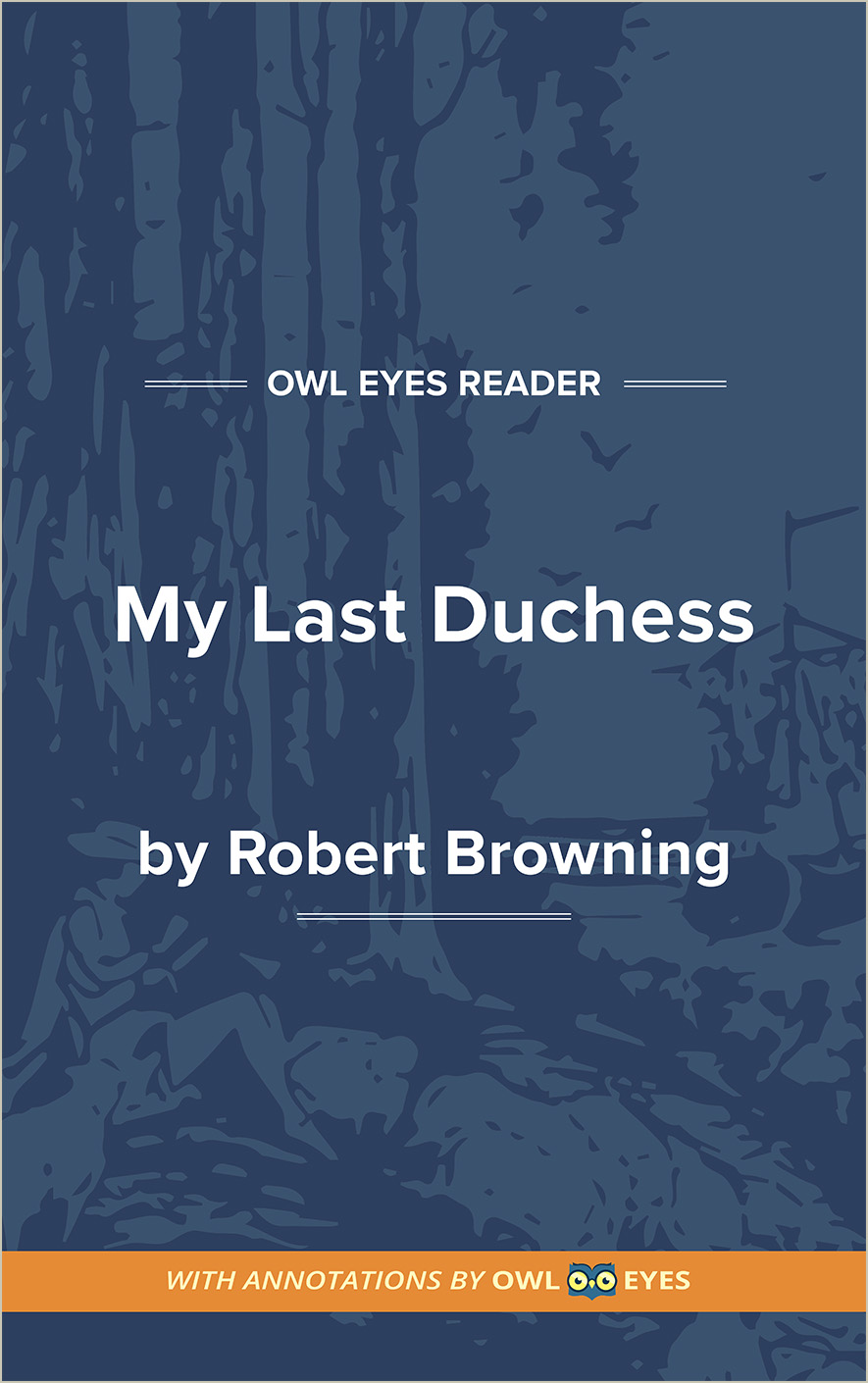Analysis Pages
Literary Devices in My Last Duchess
Allusion: Perhaps the most significant allusion—a reference to another work of art or text—is at the end of the play to the Roman god Neptune. The listener appears to be ready to leave the Duke’s art collection, perhaps because he has realized that the Duke is cruel and dangerous. To keep the listener there and to continue discussing the terms of his new bride’s dowry, the Duke directs the listener’s attention to the statue of Neptune’s taming a seahorse. This can be read (as it likely is by the Duke) as the Duke’s exercising rightful dominion over his wife, or it can also been seen as a powerful entity being overzealous in taking control over its less-powerful constituents.
Dramatic Monologue: This poem is a dramatic monologue, a poetic form that mimics the speech of an individual character. The speaker is not the poet and the scene unfolds only through the monologue of the speaker. The person addresses one or more other people and reveals his psychological make up through the monologue.
Psychological Portrait: Robert Browning uses word choice, figures of speech, metaphors, and analogies to indicate the speaker’s personality. The speaker seems to be confessing to murdering his wife, but he remains unaware of the implications of his words. This tendency to inadvertently confess reveals the speaker’s arrogance and disconnection with the world.
Unreliable Narrator: The speaker speaks openly about his wife’s “crimes” and suggests that he believes his actions to be justified. This perspective clashes with social expectations and conventional morality but is in line with the Duke’s personal morality. In other words, the Duke believes that he had the right to kill his wife because she insulted his pride and social status. The Duke’s perspective shapes the version of the story that readers see and should make them question his reliability as a narrator.
Literary Devices Examples in My Last Duchess:
My Last Duchess
🔒"That's my last Duchess..." See in text (My Last Duchess)
"Notice Neptune, though, Taming a sea-horse..." See in text (My Last Duchess)
"wall..." See in text (My Last Duchess)

